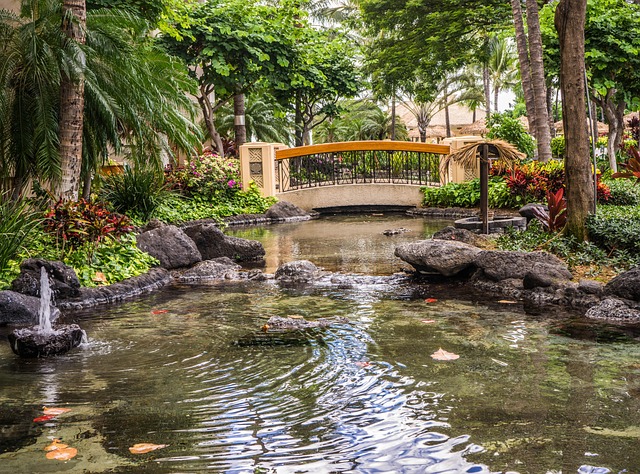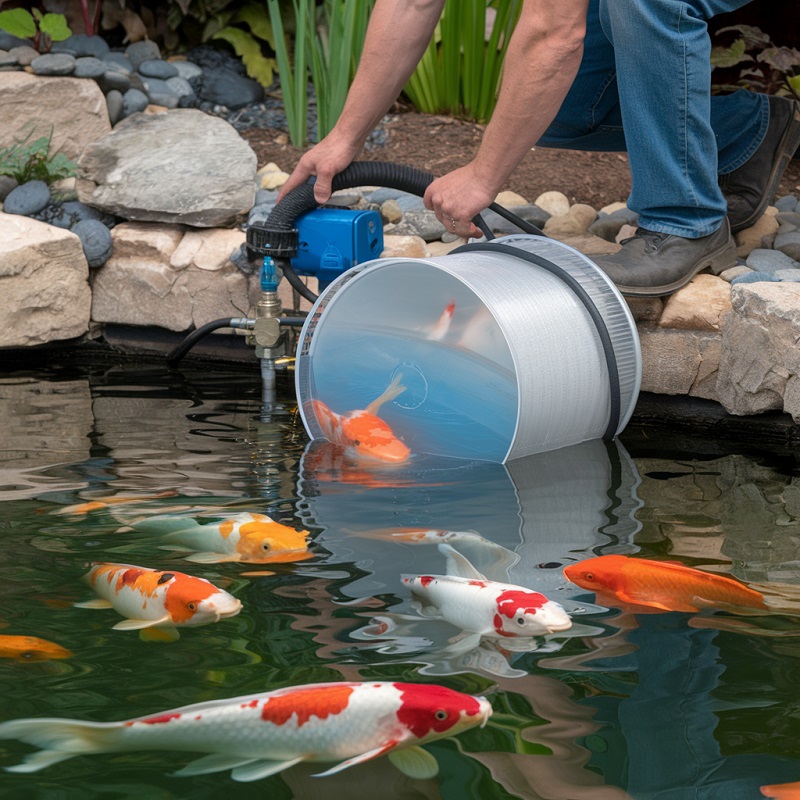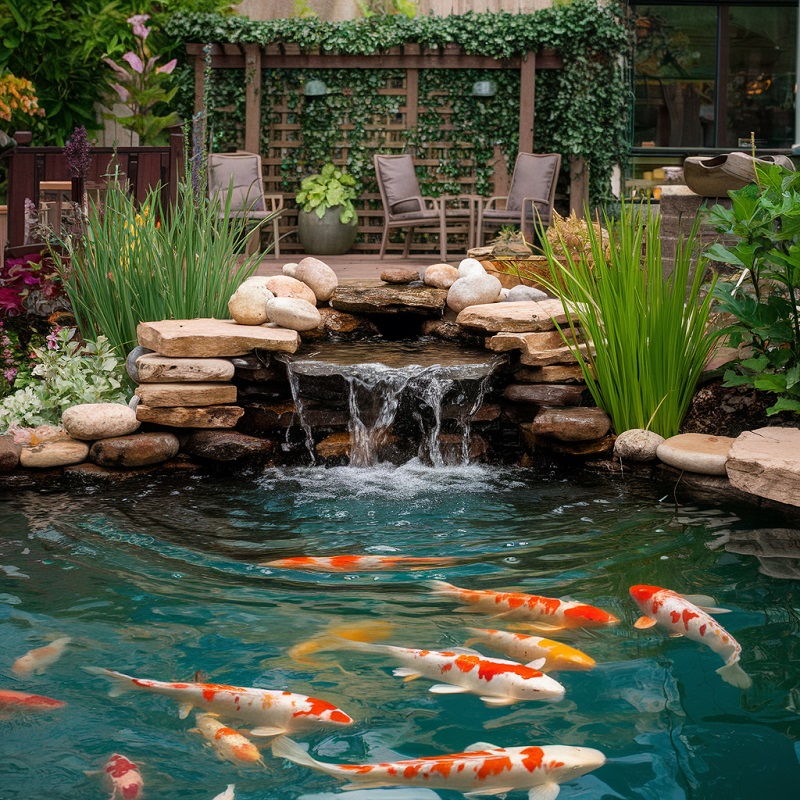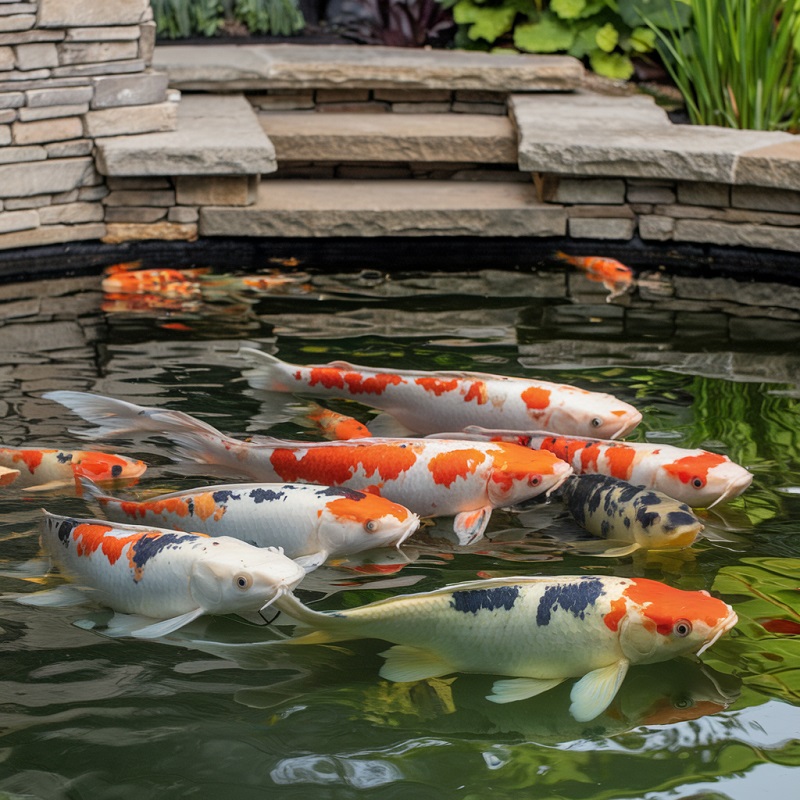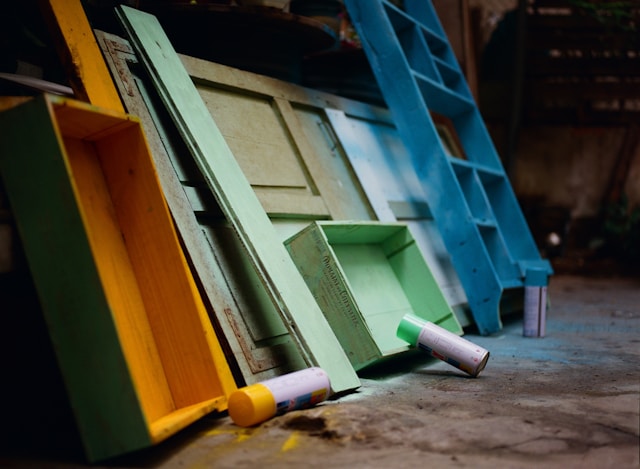Koi ponds possess an enchanting beauty that’s hard to ignore. With colourful, ornate fish gliding through crystal-clear water, these aquatic features can bring harmony and tranquillity to your outdoor space. However, you can’t just fill a pond with fish and call it a day. Proper effort and dedication are essential to keeping the fish and their surrounding ecosystem healthy, happy, and thriving. From maintaining water quality to controlling algae growth, here are 6 steps to help you create the optimal environment for your koi fish:
Install a Drum Filter for Automatic Cleaning
Every koi pond owner wants clean, clear water—not a murky mess. That’s where rotating drum filters for ponds come in. These high-performance filters automatically remove waste, keeping your pond clean with minimal effort. They’re a favourite among koi hobbyists for their efficiency, high flow rates, and ability to improve water clarity while making maintenance a breeze.
What is a Rotary Drum Filter?
A drum filter for pond is a mechanical filtration system designed to remove solid waste from your pond water. The filter consists of a drum wrapped in a fine stainless-steel mesh that captures debris and organic waste. When the mesh becomes blocked, a sensor triggers an automatic cleaning cycle. During this cycle, the drum rotates while high-pressure jets spray the debris off the mesh and into a waste outlet, ensuring a continuous flow of clean water.
How Does it Work?
Drum filters for ponds are typically installed externally and can be either gravity-fed or pump-fed. In a gravity-fed system, water enters the filter from the ‘dirty’ side, passing through a dividing panel into the drum. The fine mesh traps solid waste while allowing filtered water to pass through. The high flow rate ensures waste is quickly transported to the filter before it can degrade water quality. Multiple inlets allow integration with both bottom drains and skimmers for efficient waste removal.
Benefits
- Automatic Cleaning – The self-cleaning mechanism reduces maintenance, leaving more time to enjoy your koi pond.
- High Flow Rates – Improves water quality, promotes koi growth, and enhances clarity.
- Multiple Inlets – Supports bottom drains and skimmers without compromising flow efficiency.
- Compact Design – Provides high filtration capacity while occupying minimal space.
- Improved Clarity – Ensures effective debris removal from all areas of the pond.
To maintain optimal water clarity, look for a filter that fits the size of your pond. A well-maintained drum filter will keep your pond environment pristine, promoting the health and beauty of your koi.
Keep Water Well-Aerated
Keeping your koi pond well-aerated is key to healthy fish and clear water. Oxygen keeps your koi active, prevents algae blooms, and supports beneficial bacteria that break down waste.
There are different ways to do this. An air pump or aerator boosts oxygen levels, while a waterfall or fountain keeps water moving and fresh. Plants also help with natural oxygen exchange.
It’s important to point out that maintaining oxygen levels depends on the season. In summer, warm water holds less oxygen, which can leave koi struggling. That’s why you should run waterfalls, fountains, and aerators at full capacity. This helps increase oxygen levels and keeps the water moving. Adding an air pump can make a big difference, giving your fish the extra oxygen they need.
Winter is the opposite. As koi become less active, their oxygen needs drop. Turning off fountains and bypassing waterfalls helps maintain a stable environment. Just make sure the pond doesn’t freeze completely—a small opening allows gas exchange, keeping the water healthy.
Test Water Quality
Testing your water regularly keeps your koi healthy and their environment stable. Water quality affects everything from fish health to algae growth, so weekly tests are essential. After heavy rain or adding fresh water, check pH, ammonia, nitrites, nitrates, and phosphate using a test kit. A pond thermometer helps monitor temperature, while a digital DO meter measures oxygen levels.
Replacing water also helps maintain balance. Swap out 10–15% weekly, or at least monthly. Increase this to 25% in summer to keep water cool and prevent ammonia buildup. In winter, 10% is enough. Consistent testing and water changes create the best conditions for thriving koi.
Keep Algae Under Control Naturally
Algae love warm, nutrient-rich water with plenty of sunlight, but too much can turn your pond into a murky mess. Excess algae also reduce oxygen levels and make the water unhealthy for koi. The good news is that you can control algae naturally without relying on harsh chemicals. Here are some effective ways to do this:
- Add Aquatic Plants – Water lilies, hornwort, and water lettuce absorb excess nutrients and block sunlight, preventing algae from thriving.
- Increase Water Movement – Algae thrive in stagnant water, so using a fountain, waterfall, or air pump improves circulation and helps control algae growth.
- Introduce Algae-Eating Fish – Plecos, Siamese algae eaters, and grass carp can naturally help reduce algae.
By balancing your pond’s ecosystem, you can keep algae under control without chemicals.
Feed Koi Properly
Feeding your koi properly is crucial for their health and the pond’s balance. A varied, balanced diet with commercial Koi pellets and natural food sources like insects and vegetables will keep your fish strong and vibrant. Feed your koi two to four times a day for up to 5 minutes, and don’t forget to remove any leftover food after 10 minutes to avoid waste. You can even create a schedule you can follow so you don’t miss feedings.
These steps might seem excessive, but overfeeding can lead to excess nutrients in the pond, fueling algae growth and increasing ammonia levels, which can harm your fish. The key is to adjust their diet based on the size and number of koi, available plants, and water temperature. You can also observe their behaviour and stop feeding once they lose interest.
Remove Debris & Sludge Regularly
Removing debris and sludge from your pond is essential for maintaining a healthy environment for your koi. Fallen leaves, fish waste, and uneaten food can build up, affecting water quality and oxygen levels. Use a pond net to scoop out leaves and debris, especially during autumn.
You should also consider installing a pond vacuum to remove sludge from the bottom. A skimmer or filter can help keep debris at bay between cleanings. Regularly clean the pump and filter to keep them running smoothly. By staying on top of debris removal, you’ll prevent algae growth and keep your koi thriving in clear water.


